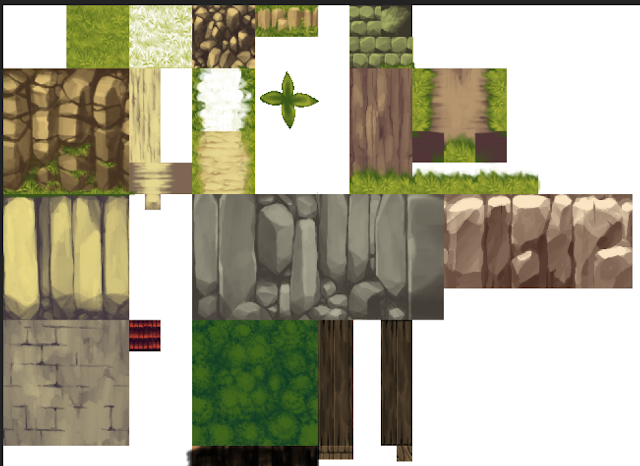Welp, I got carried away learning 3d again. I'll show off some of it here, but I will be going back to working on normal stuff tomorrow. Still not sure how much I will change Kurovadis for Steam, but that's what I'll be working on. I might stream it, though I feel like it might be a bit boring to watch. If I stream, I might have to come up with something else. Maybe an H game jam in a day, or something like that? Dunno.
Anyhow, as for the 3d stuff, initially my goal was to do mockups in various style in order to decide which I would want to do if I did 3d. Last time was a more high poly/modern workflow, abeit trying to keep it practical. This time, I tried working on something more stylized.
Initially, I started doing textures as pixel art. Aiming for something like Megaman Legends.
The style looks good in MML, and obviously I know how to draw pixel art. However, in my rushed example, I found that it wasn't as fun to work on. Possibly just because it was essentially just what I do normally, making pixel art, with a lot of 3d's "cheats" not really available to me. Maybe I'll try some other time, but especially for a fantasy game with a lot of nature and stuff, pixel art seems like it would be very difficult.
Instead, I tried drawing at the same resolution as pixel art, but with normal brushes. Of all the methods, this one seems like it's one of the fastest, since it is more forgiving than high resolution, but maintains some of the appeal of pixel art. To ensure that colors can be easily changed (like pixel art) I used a workflow where every texture is 2 colors, a flat color, and a shadow drawn on a layer above. Any grass, etc, is on the same layer, which means that to change the color of grass on all tiles, you need only change 2 layers.
A variation of this style is to incorporate real textures or finer grit. However I'm not sure if I would do this or not. I think it would work well more a more gritty dark game, like if you were making something with low poly, yet more realistic looking characters.

In my case, each grid cell in Blender is assumed to be 32px. To determine how big a tileset element should be, I would just measure the size of the object in Blender. Like this, you can make pixels a uniform with minimal stretching. Though the smooth shading also makes that more forgiving.
You can also model things as modular parts to be used directly in creating levels/scenery. One of the benefits of 3d is that there is no "tileset", so I can make textures that are smaller than 16px, despite using it like a tileset..
I found that the best approach for me was to seperate the ground and walls into seperate meshes. This also allows you to shape the walls without worring about messing up the grid of other elements.
A common element in older games is Vertex coloring. This can be used to manually add variation to textures. In general it can be used to create trails of color, or highlight certain elements.
Here is an example of the scene with no lighting. Only vertex coloring and fog, in the environment. Like this, color palette is very important, which is why I tried to make sure textures could be easily changed.
One method is to create levels within Unity, but I prefer the control I have working on stuff within Blender. There's a lot of appeal to being able to model something in the exact spot it will be in a scene.
You can use Vertex colors and fog alone, however I find lighting scenes to be fun and interesting. It feels like I'd be missing out if I didn't use lighting. You can apparently bake lighting to vertex colors, but I havn't seen good results with that. You could also manually "light" a scene with vertex colors, but that seems very time consuming.
Fog and environmental color is also very useful. As long as you keep colors in check you can do a lot with scenes.
Still keeping resolutions fairly low for textures, I figured I'd try vertex colors for a skydome. Initially I did it because it's the fastest, but honestly it actually works pretty well.
To make clouds, I just did a transparent image and stuck it off in the distance. Being 3d, of course you can cheat like hell and make a whole sky box out of one cloud.
Just by changing the color of fog, environment color, and the color of the sky, you can change the scene pretty dratically. I'm not sure if it would be better to use this to do real time day/night, or utilize all of it to make very unique areas with a different feel.
The thing to do these days is to tint the whole screen, or use color grading. I dunno, feels like giving up on color to do that. Though it could be that if I try it, I'll find a use for it. A lot of games grossly mis-use certain effects (Like bloom), so it's difficult to know how genuine something is as a tool until you get ahold of it yourself.












































































